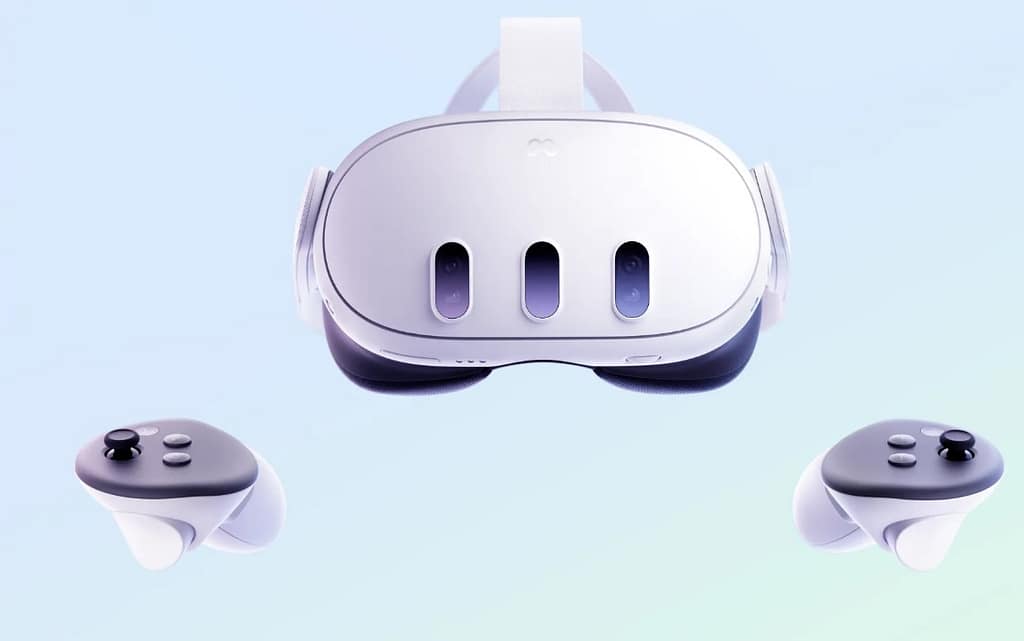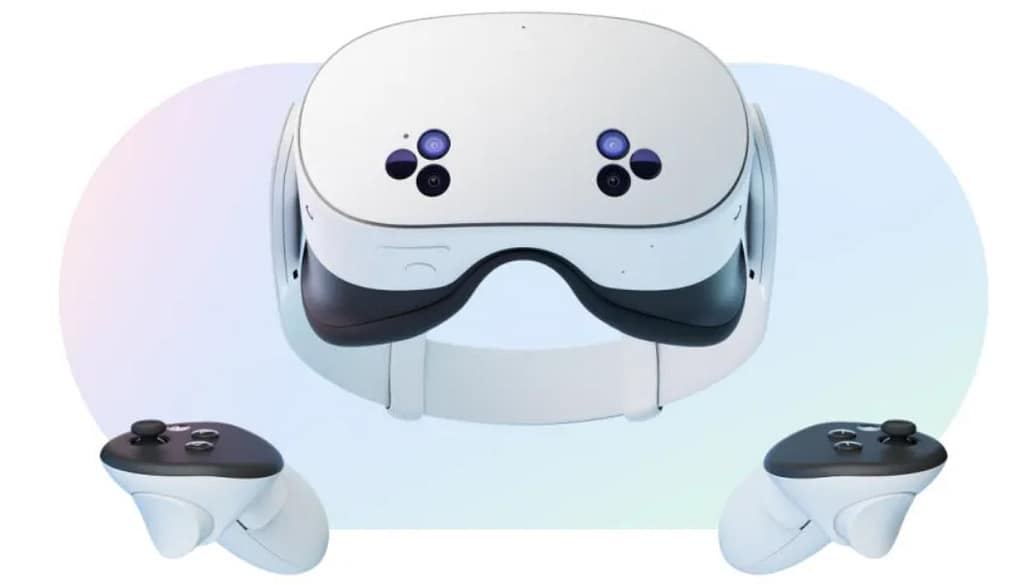Virtual reality (VR) has revolutionized the gaming experience, offering players an unparalleled level of immersion that makes you feel like you’re stepping into entirely new worlds. But with so many options on the market, finding the best VR headsets for gaming can feel overwhelming. Whether you’re a seasoned VR gamer or just stepping into the virtual world, this guide breaks down the top options available in 2024.
You May Also Like: Smart Gadgets for Small Apartments
Why Choose VR for Gaming?
VR headsets allow you to interact with games in a way that traditional consoles or PCs simply can’t. From battling aliens in deep space to exploring uncharted landscapes, the level of immersion is unmatched. With motion tracking, enhanced displays, and ergonomic designs, today’s VR headsets cater to both casual gamers and hardcore enthusiasts.

Image Credit: Meta
1. Meta Quest 3: Best Overall VR Headset
Specifications:
- Display: LCD Pancake
- Resolution (per eye): 2064 x 2208
- Refresh Rate: Up to 120 Hz
- Field of View: 110° horizontal, 96° vertical
- Controllers: Meta Quest Touch Plus
- Connections: USB Type-C, Wi-Fi 6E, Bluetooth
Reasons to Buy:
- Easy setup with no external sensors
- Slim, comfortable design
- High-resolution visuals
- Excellent standalone performance
Reasons to Avoid:
- Short battery life (2 hours)
- Expensive accessories
The Meta Quest 3 builds on its predecessor’s success with slimmer pancake lenses and a more compact design, making it comfortable for long gaming sessions. Powered by Qualcomm’s Snapdragon XR2 Gen 2 chip, this headset offers a significant performance upgrade, capable of handling both standalone and PC-connected gaming.
Setting up the Quest 3 is a breeze, requiring no external sensors or complicated calibration. Whether you’re playing wirelessly using Meta’s Air Link or connecting via USB Type-C, the visuals remain crisp, with a per-eye resolution of 2064 x 2208. The passthrough cameras allow seamless transitions between your virtual and physical environments.
You May Also Like: Best Tablets for Students: A Comprehensive Guide

Image Credit: Meta
2. Meta Quest 3S: Best Budget Option
Specifications:
- Display: LCD
- Resolution (per eye): 1832 x 1920
- Refresh Rate: Up to 120 Hz
- Field of View: 96° horizontal, 90° vertical
- Controllers: Meta Quest Touch Plus
- Connections: USB Type-C, Bluetooth
Reasons to Buy:
- Affordable pricing
- Supports Oculus Link tethering
- Reliable performance for beginners
Reasons to Avoid:
- Uses older Fresnel lenses
- Modest visuals compared to premium models
The Meta Quest 3S strikes the perfect balance between performance and affordability. While it lacks the crisp visuals of the Quest 3’s pancake lenses, its Qualcomm Snapdragon XR2 Gen 2 chip ensures smooth gameplay. This headset is an excellent entry point for those new to VR or gamers on a budget.

Image Credit: PICO
3. ByteDance Pico 4 Ultra: Best for Non-Meta Enthusiasts
Specifications:
- Display: LCD Pancake
- Resolution (per eye): 2160 x 2160
- Refresh Rate: Up to 90 Hz
- Field of View: 105°
- Controllers: 2x textured controllers
- Connections: USB Type-C, Wi-Fi 7
Reasons to Buy:
- Competitive pricing
- High-resolution display
- Comfortable fit for extended use
Reasons to Avoid:
- Limited game library
- Occasional tracking issues
For gamers who prefer an alternative to Meta’s ecosystem, the Pico 4 Ultra delivers an excellent balance of quality and price. With a higher per-eye resolution than the Quest 3, this headset provides stunning visuals. However, its smaller library and occasional tracking hiccups make it less appealing to hardcore gamers.
You May Also Like: Living Off-Grid: Solar Power and Batteries Explained
Key Considerations When Buying a VR Headset
Tracking Technology: Lighthouses vs. Inside-Out
Older VR systems like the HTC Vive used external sensors called lighthouses for tracking. While accurate, this method is cumbersome and requires setup each time you play. Modern headsets, such as the Meta Quest 3, use inside-out tracking, relying on built-in cameras to monitor your movements. This technology has improved significantly, offering near-lighthouse accuracy without the hassle.
Standalone vs. PC-Connected VR
Standalone headsets like the Quest series operate independently, while PC-connected options offer higher performance. If you have a high-end gaming PC, investing in a PC-compatible headset can unlock visually rich games like Half-Life: Alyx. For casual gaming, standalone options are more convenient.
Are There Wireless PC VR Headsets?
Yes! The Meta Quest series has pioneered wireless PC VR through its Air Link feature, allowing you to enjoy high-performance games without the tether of cables. However, you’ll need a strong Wi-Fi 6E connection to minimize lag.
You May Also Like: Success vs Happiness: A Journey Through the Dichotomy
Conclusion: Which is the Best VR Headset for Gaming?
If you’re after the best overall experience, the Meta Quest 3 is the ultimate choice, combining excellent visuals, ease of use, and robust hardware. For those on a budget, the Quest 3S offers a fantastic entry point without compromising too much on performance. Finally, the Pico 4 Ultra serves as a solid alternative for gamers seeking something outside Meta’s ecosystem.
VR gaming has never been more accessible, with options catering to all levels of interest and expertise. Whether you’re exploring alien landscapes, racing through futuristic cities, or battling mythical creatures, these headsets will elevate your gaming adventures to a whole new dimension.